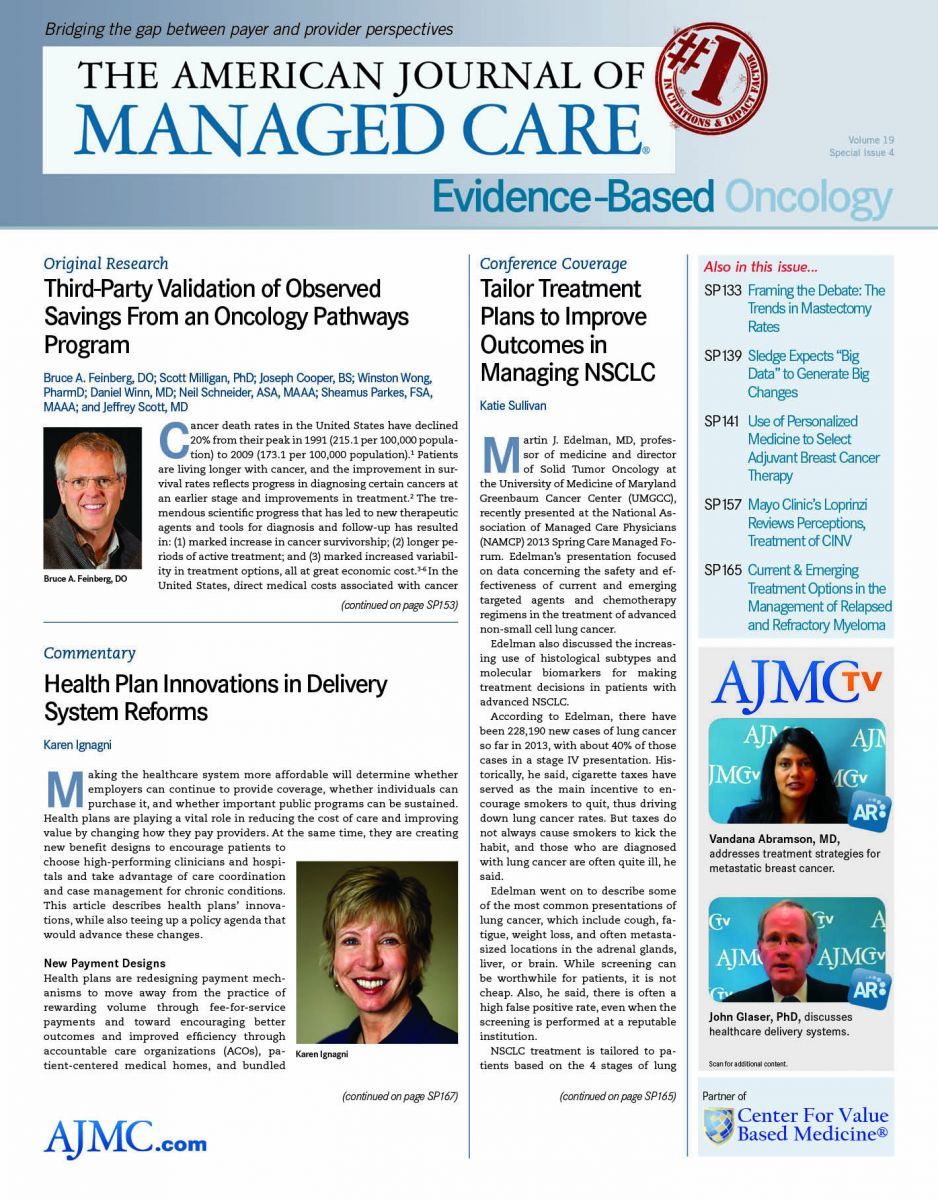- Center on Health Equity & Access
- Clinical
- Health Care Cost
- Health Care Delivery
- Insurance
- Policy
- Technology
- Value-Based Care
Looking at Specialty Pharmaceutical Rejections
As health plans, insurers, and pharmacy benefit managers try to manage rising specialty pharmacy costs, it is generally conceded that in certain areas, such as oncology, payers have limited room to maneuver. Oncology coverage is perhaps more of an ethical than a financial decision for the vast majority of agents, and it would be informative to understand how payers’ use of prior authorization and step therapy affects the use of the specialty pharmaceutical benefit. Although health plans are aggressively managing the traditional pharmaceutical benefit with prior authorization step therapy, reference pricing, and generic substitution, it is generally not understood how often payers reject claims for specialty agents.
To get a better picture of the “lifecycle of the healthcare transaction,” according to Dea Belazi, PharmD, MPH, vice president of Payer and Healthcare Solutions, Symphony Health Solutions, his organization caputred and analyzed interconnected transactional healthcare claims, parsing the data by commercial, Medicare, and Medicaid. Using Medi-Span drug category codes, they classified specialty products and evaluated oncology agents as a separate subgroup. They found that 5 drug categories accounted for 85% of all oncology prescriptions, and that the aromatase inhibitors (eg, anastrozole, exemestane, and letrozole) were associated with the greatest utilization. The other 4 categories were the antiandrogens, tyrosine kinase inhibitors, folic acid analogues, and miscellaneous antineoplastics. The top 5 specialty agents accounted for 90% of the total utilization. Belazi noted that the fastest growth in specialty utilization was in the Medicare population.
Although payers may reject product coverage for a number of reasons (including National Drug Code blocks or refills requested too soon), they focused on rejection rates associated with prior authorization and step therapy protocols. Belazi’s group found that the initial rejection rates for specialty products (between 8% and 9% over the last few years) and oncology (between 7% and 8%) were noticeably greater than those for conventional medications (at approximately 6% and slowly rising), and the number of prior authorization requirements was also higher. They analyzed the trends associated with the initial rejection and the actions taken in the first 30 days that followed.
After the prior authorization rejection, two-thirds of the patients did not receive any drug. Slightly more than 10% received a different agent. Only 5% to 7% of patients who resubmitted their request for prior authorization were rejected again. However, Belazi cautioned that “This may be a bit different finding if you look beyond the 30-day mark.” A total of 67% of patients whose specialty drugs were rejected because they did not meet the steptherapy requirement did not receive another drug within the 30-day window, compared with 53% of those seeking oncology medications. The remaining patients obtained another agent according to the step-therapy protocol.
Belazi revealed that when looking at the 30-day horizon, most rejections for oncology and specialty drugs occurred within the first day after the prescription request was made. It was followed by a lull, and then a new spike in rejections was observed within the last 10 days (ie, days 20-30). “The reason for this double peak is not clear,” he explained.
These findings provide support for the effectiveness of prior authorization and step-therapy—based coverage rejections for the specialty and oncology category. Within 30 days of preauthorization, the vast majority of patients and their providers did not dispute the finding and seek specialty drug therapy.

Trends in Hospital Pricing for Vulnerable Emergency Department Users, 2021-2023
December 4th 2025Self-pay emergency department prices rose significantly from 2021 to 2023, especially at for-profit and system-affiliated hospitals, highlighting growing affordability challenges for uninsured and underinsured patients.
Read More

